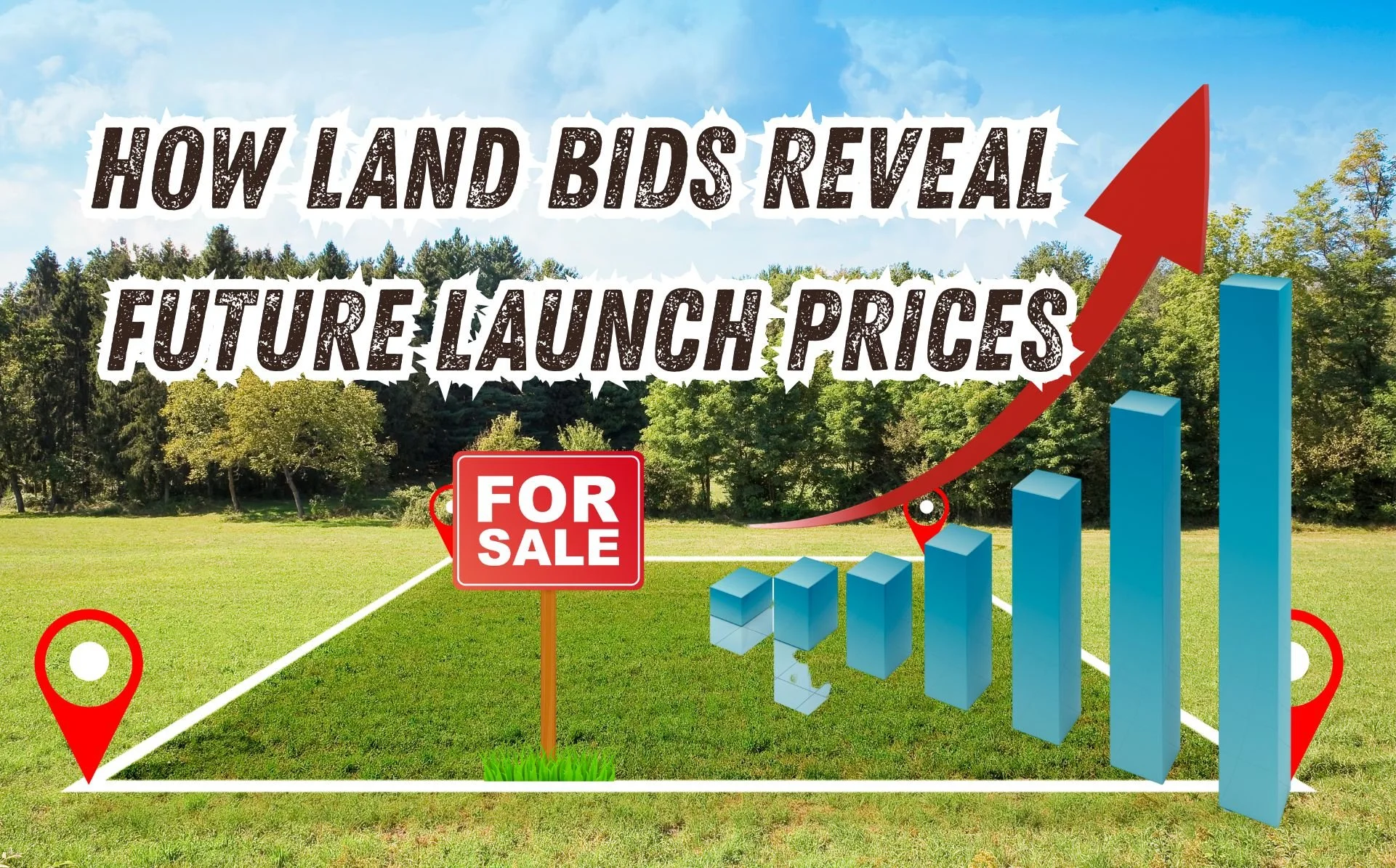Decode the Code: How Land Bids Reveal Future Launch Prices
How to Read Developer Land Bids and Predict Launch Prices
Why Land Bids Matter
Every new launch begins with a single number — the land bid price.
It’s the foundation that determines everything that follows: the launch price, entry value for buyers, and even your long-term upside potential.
When developers bid aggressively, it reflects confidence in market demand.
When bids are conservative, it signals caution — often creating opportunities for buyers who can spot value early.
Example:
In 2024, when interest rates were high, developers bid more cautiously. As a result, 2025 launches entered the market at lower, more attractive prices — and many sold out quickly.
Now, as confidence returns, land bids are creeping higher again, setting the stage for new benchmark prices in 2026.
Understanding the Land Bid Price (psf ppr)
The price per square foot per plot ratio (psf ppr) shows how much a developer pays for every buildable square foot of land.
From there, we can estimate their eventual launch pricing using this practical formula 👇
🧮 Developer Pricing Formula
1️⃣ Land Cost (psf ppr)
2️⃣ + $400 psf (construction costs)
3️⃣ + 30% for all-in costs (financing, marketing, admin, contingencies) → Breakeven
4️⃣ + 20% profit margin → Estimated Launch Price
Example Calculation
Let’s say a developer bids $1,100 psf ppr for a new GLS site.
✅ Estimated launch range: $2,300–$2,400 psf
Comparing current Land Bid Price vs future Land Bid Price
By comparing, you can quickly identify where entry price gaps still exist — a key clue for spotting undervalued projects. Are there opportunities to enter at a lower entry price today vs if you were to enter in future? Are future land costs going to hit new bench mark price, which results in new bench mark launch price as well?
Reading Between the Lines: What Bidding Patterns Reveal
The number of bidders and bid gaps reveal the market’s pulse:
💪 Many bidders (6–10): Strong developer confidence; prices may rise next cycle.
😐 Few bidders (1–3): Market caution; potential for better buyer entry.
⚡ Top vs 2nd bid gap >10%: Bullish expectations; possible record pricing ahead.
📈 Close bid margins: Industry consensus on fair value.
Predicting the Launch Price Band
Using your formula, you can quickly estimate the launch range for upcoming projects:
This gives investors and upgraders a data-backed lens to assess whether a new launch offers genuine value — or if it’s priced ahead of its time.
How You Can Use This Insight as a Buyer
By learning to interpret land bids, you’ll:
📍 Spot undervalued projects early — before they become the next hype.
📊 Understand price movements — and what’s driving new benchmarks.
💡 Time your entry to buy before developer restocking drives the next wave up.
🔁 Plan your exit strategy with more confidence, based on factual cost logic.
Final Thoughts
Understanding land bids isn’t just for developers — it’s a powerful insight for every smart buyer and investor.
Once you know how to read these numbers, you can:
✅ Anticipate where prices are heading
✅ Identify projects with real upside
✅ Make confident, data-backed decisions
Because the smartest move in property isn’t guessing — it’s decoding what the developers already know.
Want to know how the latest GLS bids may affect the price of your next home or investment? Reach out to us and we will show you where the smart money is heading in 2026.




